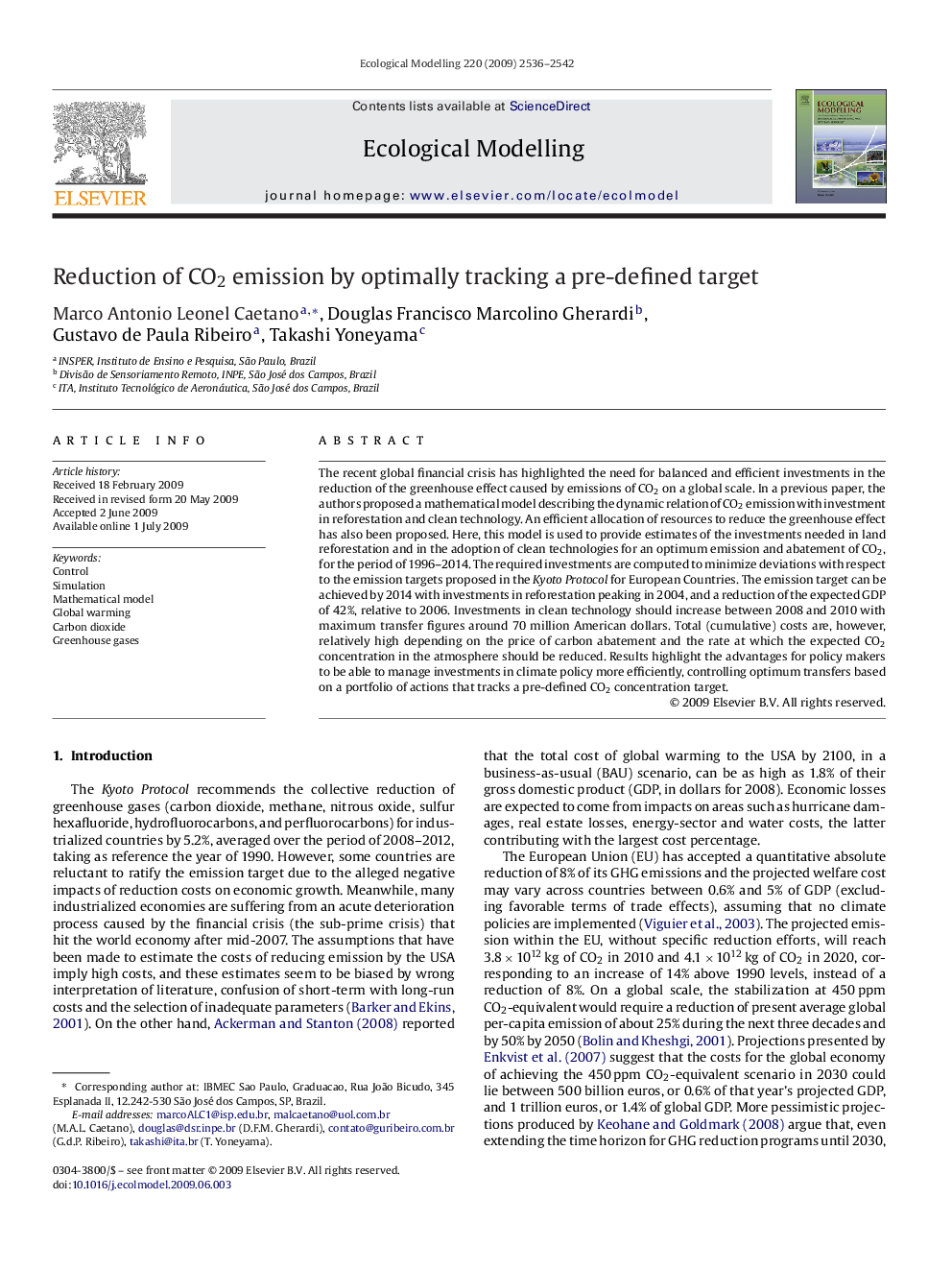| Article ID | Journal | Published Year | Pages | File Type |
|---|---|---|---|---|
| 4377670 | Ecological Modelling | 2009 | 7 Pages |
The recent global financial crisis has highlighted the need for balanced and efficient investments in the reduction of the greenhouse effect caused by emissions of CO2 on a global scale. In a previous paper, the authors proposed a mathematical model describing the dynamic relation of CO2 emission with investment in reforestation and clean technology. An efficient allocation of resources to reduce the greenhouse effect has also been proposed. Here, this model is used to provide estimates of the investments needed in land reforestation and in the adoption of clean technologies for an optimum emission and abatement of CO2, for the period of 1996–2014. The required investments are computed to minimize deviations with respect to the emission targets proposed in the Kyoto Protocol for European Countries. The emission target can be achieved by 2014 with investments in reforestation peaking in 2004, and a reduction of the expected GDP of 42%, relative to 2006. Investments in clean technology should increase between 2008 and 2010 with maximum transfer figures around 70 million American dollars. Total (cumulative) costs are, however, relatively high depending on the price of carbon abatement and the rate at which the expected CO2 concentration in the atmosphere should be reduced. Results highlight the advantages for policy makers to be able to manage investments in climate policy more efficiently, controlling optimum transfers based on a portfolio of actions that tracks a pre-defined CO2 concentration target.
